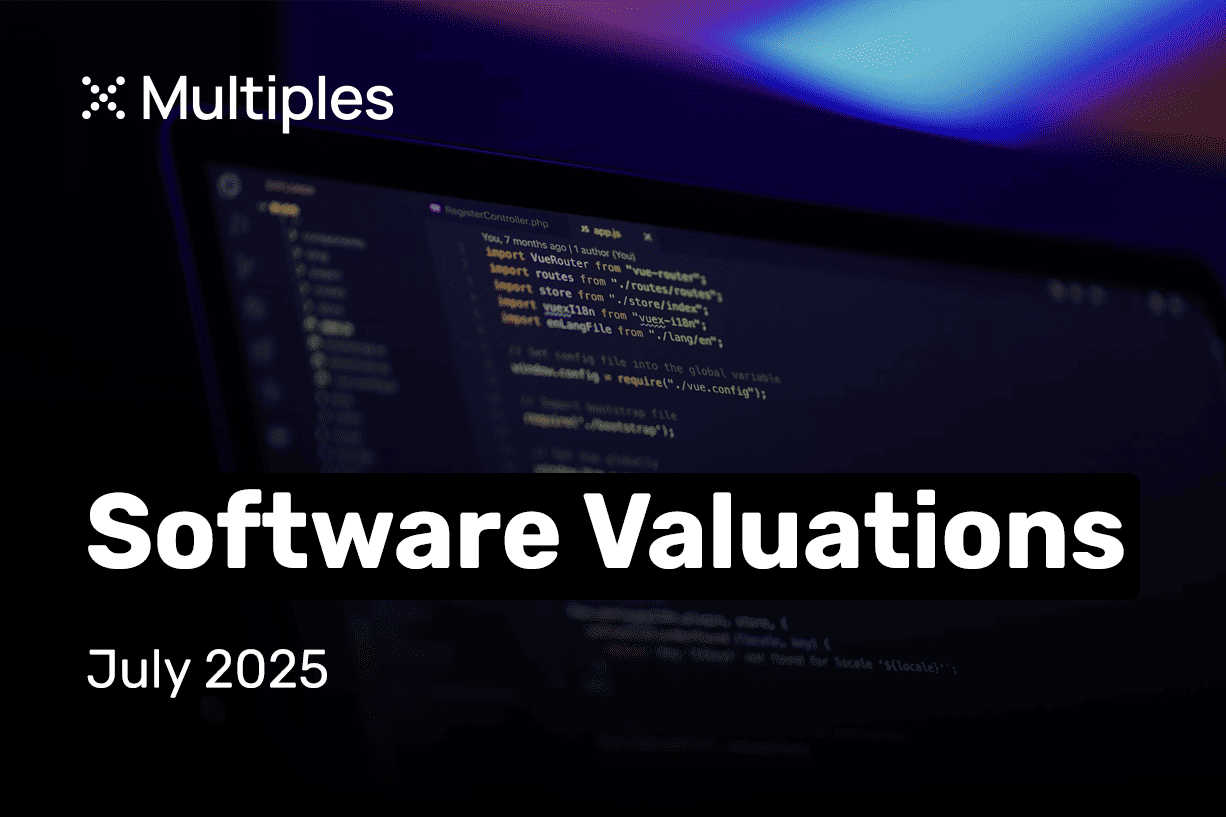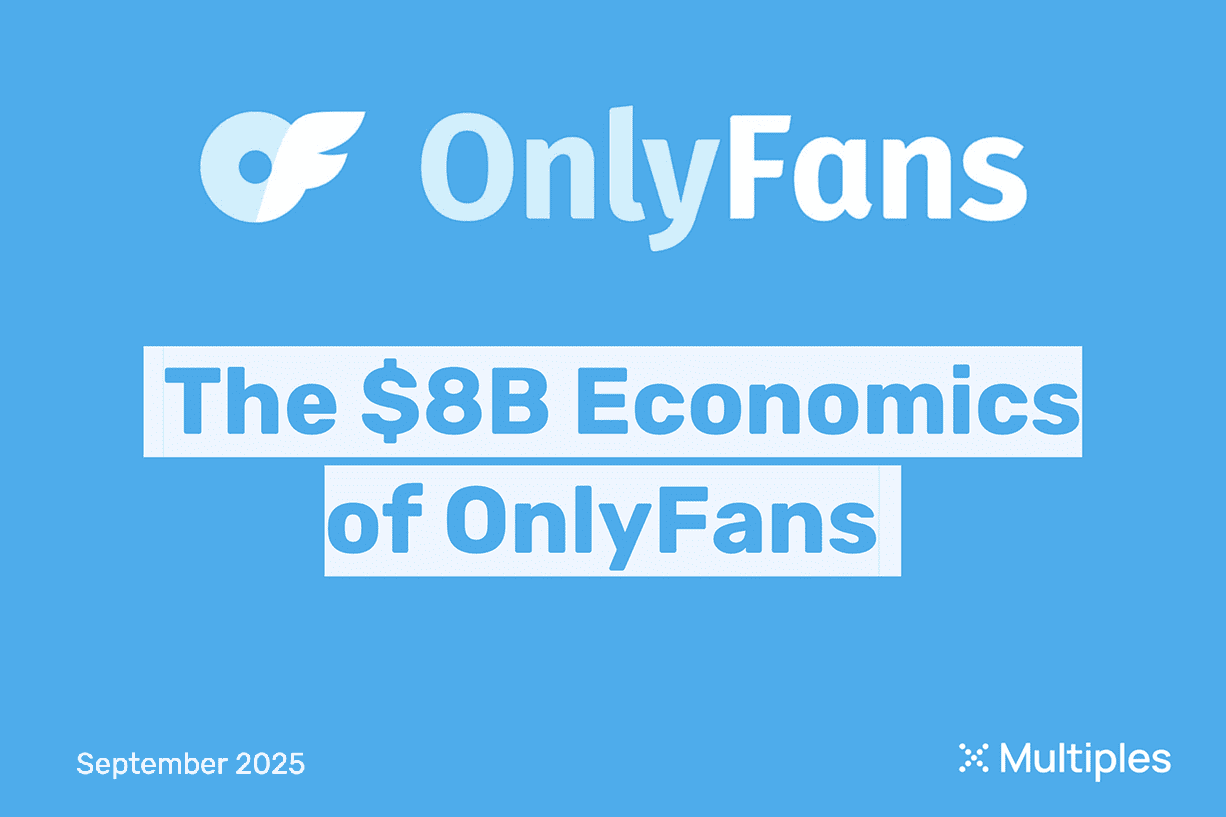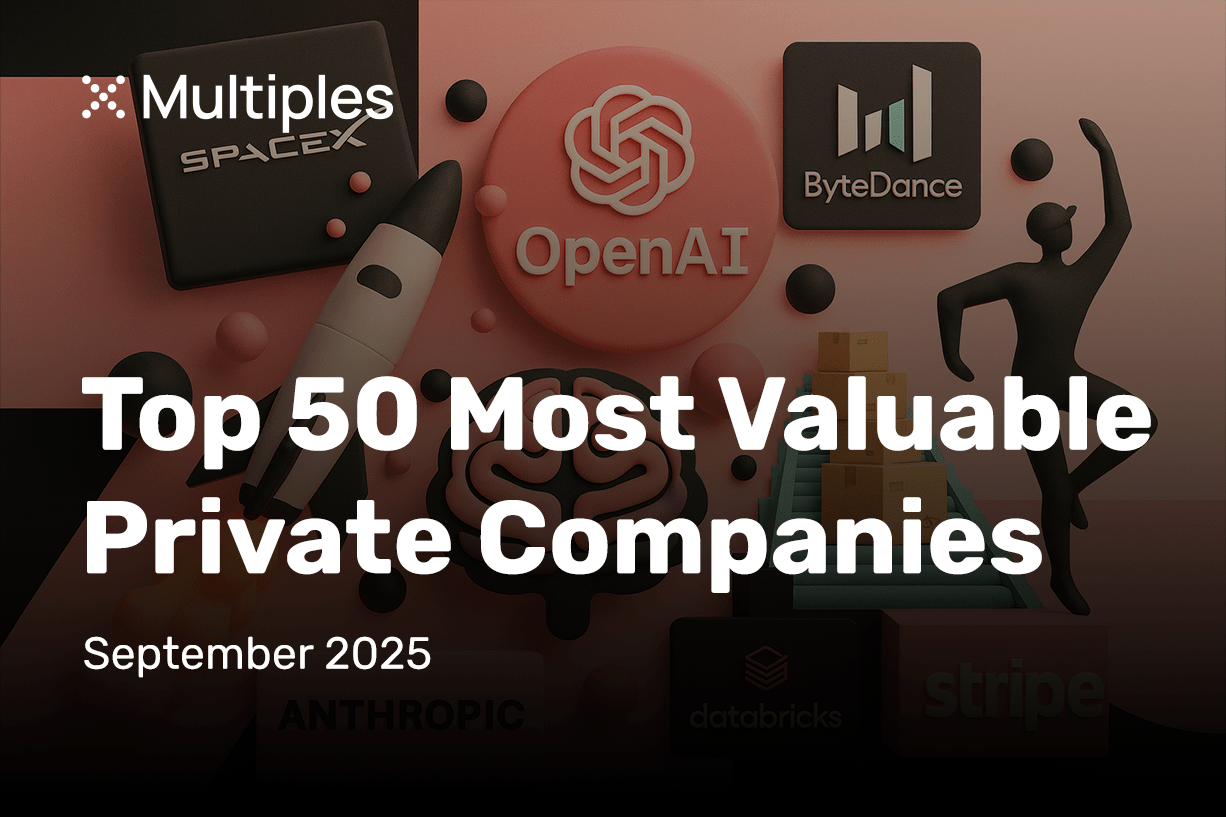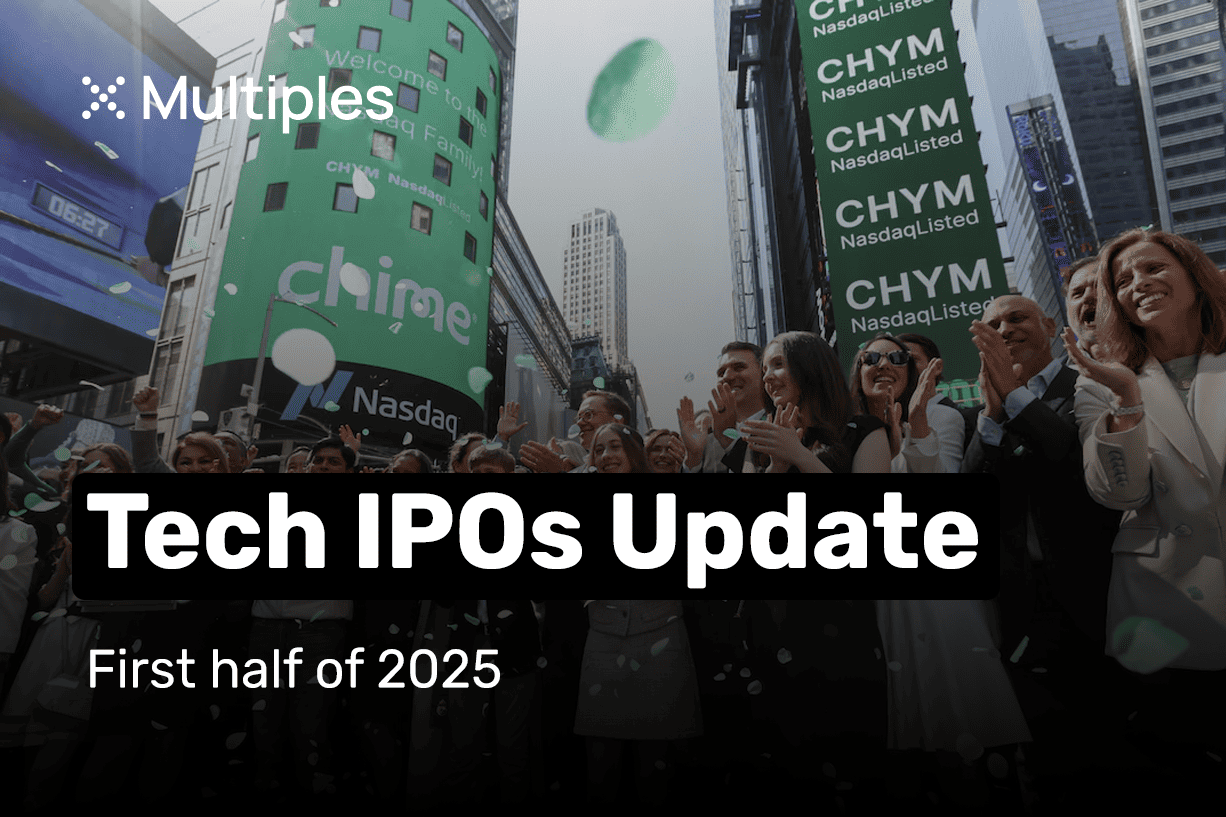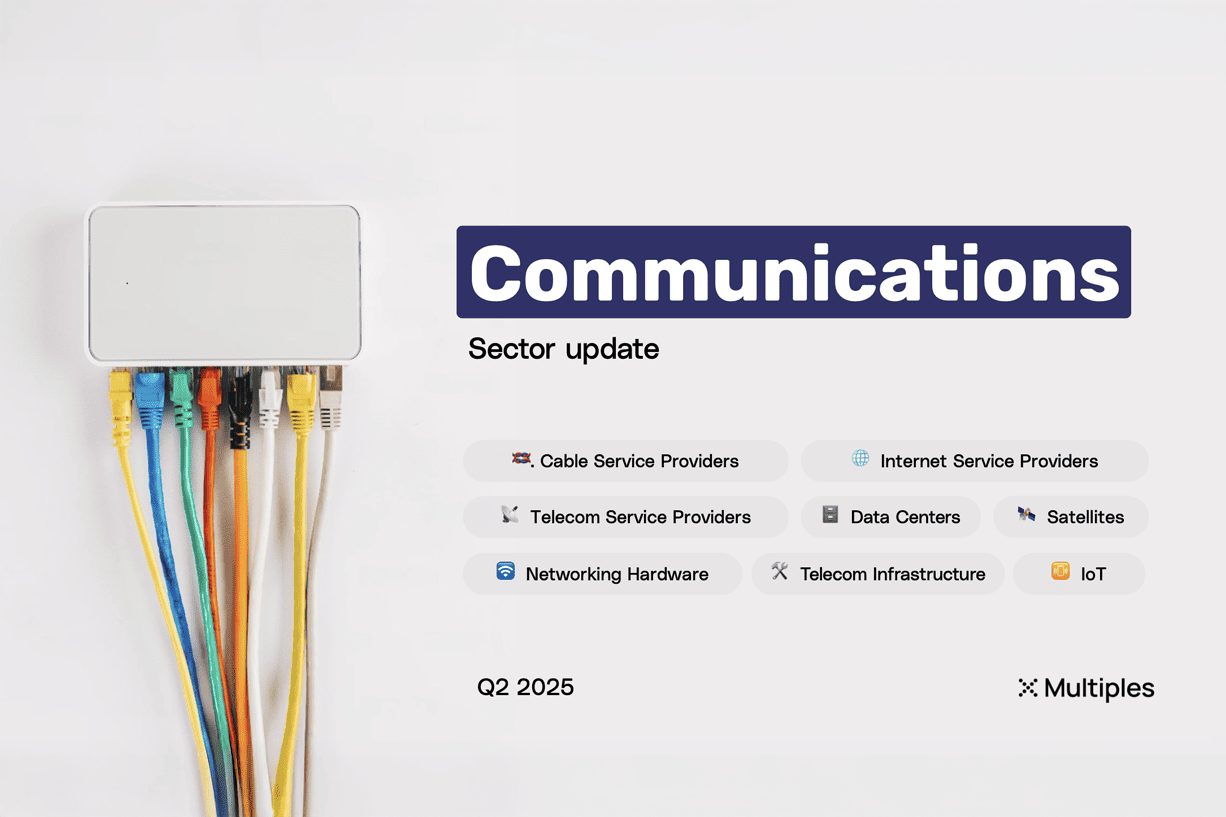About this report
September 2025 update on neobanking valuation multiples: still a winner-takes-all market, with 🇧🇷 Nubank, 🇬🇧 Revolut, and 🇨🇳 WeBank dominating the industry across all metrics, with 🇸🇪 Klarna transforming itself from a BNPL player to a full-fledged neobank.
Nubank dethroned - valued at $75B in the latest secondary share sale, Revolut is now the largest neobank in the world in terms of valuation. Revolut is also valued significantly higher than Nubank (18.3x vs. 5.8x revenue and 53.6x vs. 32.7x pre-tax profit).
🇸🇪 Klarna's second act: Swedish fintech unicorn is gearing up for its IPO, rumoured to be valued as high as $14B. Klarna is ditching its previous positioning as a pure-play BNPL (buy now, pay later) platform and becoming a true neobank. Klarna partnered with Visa to roll out its debit card in the US and recently launched FDIC-backed deposit accounts.
Neobanking is *very* strong in Europe, and in particular the UK. London is home to 4 out of the 10 world's biggest neobanks (🇬🇧 Revolut, 🇬🇧 Wise, 🇬🇧 Monzo Bank, 🇬🇧 Starling Bank), and many other category-defining platforms were founded in the UK, like 🇬🇧 Curve, 🇬🇧 Monese, 🇬🇧 Tide, 🇬🇧 OakNorth or 🇬🇧 Chip.
In Asia, Tencent-backed WeBank serves already nearly half a billion (!) customers in China. Two large neobanks operate in Korea - KakaoBank and Kbank, the latter one looking to IPO by 2026.
Scroll below to read the interactive version of this report, or download the PDF here.
This analysis is available to download as a PDF presentation, get it below 👇
Download PDF
Valuations
Revolut dethroned Nubank as the highest valued neobank in the world, as of September 2025, being valued at $75B.
Data table
| Column 1 |
Valuation |
Revenue |
Profit pre tax |
Customers |
EV/Rev |
EV/Profit |
EV/Users |
ARPU |
| 🇧🇷 Nubank |
72.0 |
12.5 |
2.2 |
122.7 |
5.8 |
32.7 |
586.8 |
102 |
| 🇬🇧 Revolut |
75.0 |
4.1 |
1.4 |
60.0 |
18.3 |
53.6 |
1250.0 |
68 |
| 🇨🇳 WeBank |
32.4 |
5.4 |
1.5 |
200.0 |
6.0 |
21.6 |
162.0 |
27 |
| 🇬🇧 Wise |
15.3 |
1.9 |
0.8 |
15.6 |
8.1 |
20.0 |
980.8 |
122 |
| 🇺🇸 Chime |
9.0 |
1.7 |
|
8.6 |
5.3 |
|
1046.5 |
198 |
| 🇰🇷 Kakao Bank |
8.1 |
2.1 |
0.3 |
24.9 |
3.9 |
25.2 |
326.1 |
84 |
| 🇬🇧 Monzo |
5.9 |
1.6 |
0.2 |
12.0 |
3.7 |
38.6 |
491.7 |
134 |
| 🇰🇷 Kbank |
3.7 |
0.3 |
0.1 |
10.0 |
12.3 |
37.0 |
370.0 |
30 |
| 🇬🇧 Starling Bank |
3.6 |
1.0 |
0.3 |
4.6 |
3.8 |
12.0 |
782.6 |
208 |
| 🇩🇪 N26 |
3.0 |
0.5 |
|
4.8 |
6.0 |
|
625.0 |
104 |
| 🇦🇷 Ualá |
2.8 |
0.3 |
|
9.0 |
9.3 |
|
311.1 |
33 |
| 🇳🇱 Bunq |
1.8 |
0.4 |
0.1 |
14.0 |
4.5 |
18.0 |
128.6 |
29 |
| 🇺🇸 Dave |
2.8 |
0.5 |
0.1 |
11.0 |
6.2 |
20.6 |
254.5 |
41 |
| 🇧🇷 Inter |
3.7 |
1.4 |
0.2 |
37.7 |
2.7 |
18.5 |
98.1 |
36 |
| 🇸🇪 Klarna |
14.0 |
3.3 |
|
111.0 |
4.3 |
|
126.1 |
30 |
Revenue Multiples
What neobanks generate the most revenue?
Nubank, WeBank and Revolut generate more revenue than all other neobanks in the world, combined.
Data table
| Column 1 |
Valuation |
Revenue |
Profit pre tax |
Customers |
EV/Rev |
EV/Profit |
EV/Users |
ARPU |
| 🇧🇷 Nubank |
72.0 |
12.5 |
2.2 |
122.7 |
5.8 |
32.7 |
586.8 |
102 |
| 🇬🇧 Revolut |
75.0 |
4.1 |
1.4 |
60.0 |
18.3 |
53.6 |
1250.0 |
68 |
| 🇨🇳 WeBank |
32.4 |
5.4 |
1.5 |
200.0 |
6.0 |
21.6 |
162.0 |
27 |
| 🇬🇧 Wise |
15.3 |
1.9 |
0.8 |
15.6 |
8.1 |
20.0 |
980.8 |
122 |
| 🇺🇸 Chime |
9.0 |
1.7 |
|
8.6 |
5.3 |
|
1046.5 |
198 |
| 🇰🇷 Kakao Bank |
8.1 |
2.1 |
0.3 |
24.9 |
3.9 |
25.2 |
326.1 |
84 |
| 🇬🇧 Monzo |
5.9 |
1.6 |
0.2 |
12.0 |
3.7 |
38.6 |
491.7 |
134 |
| 🇰🇷 Kbank |
3.7 |
0.3 |
0.1 |
10.0 |
12.3 |
37.0 |
370.0 |
30 |
| 🇬🇧 Starling Bank |
3.6 |
1.0 |
0.3 |
4.6 |
3.8 |
12.0 |
782.6 |
208 |
| 🇩🇪 N26 |
3.0 |
0.5 |
|
4.8 |
6.0 |
|
625.0 |
104 |
| 🇦🇷 Ualá |
2.8 |
0.3 |
|
9.0 |
9.3 |
|
311.1 |
33 |
| 🇳🇱 Bunq |
1.8 |
0.4 |
0.1 |
14.0 |
4.5 |
18.0 |
128.6 |
29 |
| 🇺🇸 Dave |
2.8 |
0.5 |
0.1 |
11.0 |
6.2 |
20.6 |
254.5 |
41 |
| 🇧🇷 Inter |
3.7 |
1.4 |
0.2 |
37.7 |
2.7 |
18.5 |
98.1 |
36 |
| 🇸🇪 Klarna |
14.0 |
3.3 |
|
111.0 |
4.3 |
|
126.1 |
30 |
What are the EV/revenue multiples for neobanks?
Despite its maturity, Revolut is still valued incredibly high based on its revenue multiple (18.3x as of September 2025).
Data table
| Column 1 |
Valuation |
Revenue |
Profit pre tax |
Customers |
EV/Rev |
EV/Profit |
EV/Users |
ARPU |
| 🇧🇷 Nubank |
72.0 |
12.5 |
2.2 |
122.7 |
5.8 |
32.7 |
586.8 |
102 |
| 🇬🇧 Revolut |
75.0 |
4.1 |
1.4 |
60.0 |
18.3 |
53.6 |
1250.0 |
68 |
| 🇨🇳 WeBank |
32.4 |
5.4 |
1.5 |
200.0 |
6.0 |
21.6 |
162.0 |
27 |
| 🇬🇧 Wise |
15.3 |
1.9 |
0.8 |
15.6 |
8.1 |
20.0 |
980.8 |
122 |
| 🇺🇸 Chime |
9.0 |
1.7 |
|
8.6 |
5.3 |
|
1046.5 |
198 |
| 🇰🇷 Kakao Bank |
8.1 |
2.1 |
0.3 |
24.9 |
3.9 |
25.2 |
326.1 |
84 |
| 🇬🇧 Monzo |
5.9 |
1.6 |
0.2 |
12.0 |
3.7 |
38.6 |
491.7 |
134 |
| 🇰🇷 Kbank |
3.7 |
0.3 |
0.1 |
10.0 |
12.3 |
37.0 |
370.0 |
30 |
| 🇬🇧 Starling Bank |
3.6 |
1.0 |
0.3 |
4.6 |
3.8 |
12.0 |
782.6 |
208 |
| 🇩🇪 N26 |
3.0 |
0.5 |
|
4.8 |
6.0 |
|
625.0 |
104 |
| 🇦🇷 Ualá |
2.8 |
0.3 |
|
9.0 |
9.3 |
|
311.1 |
33 |
| 🇳🇱 Bunq |
1.8 |
0.4 |
0.1 |
14.0 |
4.5 |
18.0 |
128.6 |
29 |
| 🇺🇸 Dave |
2.8 |
0.5 |
0.1 |
11.0 |
6.2 |
20.6 |
254.5 |
41 |
| 🇧🇷 Inter |
3.7 |
1.4 |
0.2 |
37.7 |
2.7 |
18.5 |
98.1 |
36 |
| 🇸🇪 Klarna |
14.0 |
3.3 |
|
111.0 |
4.3 |
|
126.1 |
30 |
Profit Multiples
What neobanks generate the most profits?
Scale hits again – top 3 neobanks generate more profits than everyone else in the world, combined.
Data table
| Column 1 |
Valuation |
Revenue |
Profit pre tax |
Customers |
EV/Rev |
EV/Profit |
EV/Users |
ARPU |
| 🇧🇷 Nubank |
72.0 |
12.5 |
2.2 |
122.7 |
5.8 |
32.7 |
586.8 |
102 |
| 🇬🇧 Revolut |
75.0 |
4.1 |
1.4 |
60.0 |
18.3 |
53.6 |
1250.0 |
68 |
| 🇨🇳 WeBank |
32.4 |
5.4 |
1.5 |
200.0 |
6.0 |
21.6 |
162.0 |
27 |
| 🇬🇧 Wise |
15.3 |
1.9 |
0.8 |
15.6 |
8.1 |
20.0 |
980.8 |
122 |
| 🇺🇸 Chime |
9.0 |
1.7 |
|
8.6 |
5.3 |
|
1046.5 |
198 |
| 🇰🇷 Kakao Bank |
8.1 |
2.1 |
0.3 |
24.9 |
3.9 |
25.2 |
326.1 |
84 |
| 🇬🇧 Monzo |
5.9 |
1.6 |
0.2 |
12.0 |
3.7 |
38.6 |
491.7 |
134 |
| 🇰🇷 Kbank |
3.7 |
0.3 |
0.1 |
10.0 |
12.3 |
37.0 |
370.0 |
30 |
| 🇬🇧 Starling Bank |
3.6 |
1.0 |
0.3 |
4.6 |
3.8 |
12.0 |
782.6 |
208 |
| 🇩🇪 N26 |
3.0 |
0.5 |
|
4.8 |
6.0 |
|
625.0 |
104 |
| 🇦🇷 Ualá |
2.8 |
0.3 |
|
9.0 |
9.3 |
|
311.1 |
33 |
| 🇳🇱 Bunq |
1.8 |
0.4 |
0.1 |
14.0 |
4.5 |
18.0 |
128.6 |
29 |
| 🇺🇸 Dave |
2.8 |
0.5 |
0.1 |
11.0 |
6.2 |
20.6 |
254.5 |
41 |
| 🇧🇷 Inter |
3.7 |
1.4 |
0.2 |
37.7 |
2.7 |
18.5 |
98.1 |
36 |
| 🇸🇪 Klarna |
14.0 |
3.3 |
|
111.0 |
4.3 |
|
126.1 |
30 |
What are the EV/profit multiples for neobanks?
Revolut profits valued much higher (53.6x) than Nubank and other rivals.
Data table
| Column 1 |
Valuation |
Revenue |
Profit pre tax |
Customers |
EV/Rev |
EV/Profit |
EV/Users |
ARPU |
| 🇧🇷 Nubank |
72.0 |
12.5 |
2.2 |
122.7 |
5.8 |
32.7 |
586.8 |
102 |
| 🇬🇧 Revolut |
75.0 |
4.1 |
1.4 |
60.0 |
18.3 |
53.6 |
1250.0 |
68 |
| 🇨🇳 WeBank |
32.4 |
5.4 |
1.5 |
200.0 |
6.0 |
21.6 |
162.0 |
27 |
| 🇬🇧 Wise |
15.3 |
1.9 |
0.8 |
15.6 |
8.1 |
20.0 |
980.8 |
122 |
| 🇺🇸 Chime |
9.0 |
1.7 |
|
8.6 |
5.3 |
|
1046.5 |
198 |
| 🇰🇷 Kakao Bank |
8.1 |
2.1 |
0.3 |
24.9 |
3.9 |
25.2 |
326.1 |
84 |
| 🇬🇧 Monzo |
5.9 |
1.6 |
0.2 |
12.0 |
3.7 |
38.6 |
491.7 |
134 |
| 🇰🇷 Kbank |
3.7 |
0.3 |
0.1 |
10.0 |
12.3 |
37.0 |
370.0 |
30 |
| 🇬🇧 Starling Bank |
3.6 |
1.0 |
0.3 |
4.6 |
3.8 |
12.0 |
782.6 |
208 |
| 🇩🇪 N26 |
3.0 |
0.5 |
|
4.8 |
6.0 |
|
625.0 |
104 |
| 🇦🇷 Ualá |
2.8 |
0.3 |
|
9.0 |
9.3 |
|
311.1 |
33 |
| 🇳🇱 Bunq |
1.8 |
0.4 |
0.1 |
14.0 |
4.5 |
18.0 |
128.6 |
29 |
| 🇺🇸 Dave |
2.8 |
0.5 |
0.1 |
11.0 |
6.2 |
20.6 |
254.5 |
41 |
| 🇧🇷 Inter |
3.7 |
1.4 |
0.2 |
37.7 |
2.7 |
18.5 |
98.1 |
36 |
| 🇸🇪 Klarna |
14.0 |
3.3 |
|
111.0 |
4.3 |
|
126.1 |
30 |
User-Based Multiples
Number of customers per neobank
Demographics define neobanks business models - Nubank (Brazil), WeBank (China), Klarna (Sweden) serve much bigger userbase.
Data table
| Column 1 |
Valuation |
Revenue |
Profit pre tax |
Customers |
EV/Rev |
EV/Profit |
EV/Users |
ARPU |
| 🇧🇷 Nubank |
72.0 |
12.5 |
2.2 |
122.7 |
5.8 |
32.7 |
586.8 |
102 |
| 🇬🇧 Revolut |
75.0 |
4.1 |
1.4 |
60.0 |
18.3 |
53.6 |
1250.0 |
68 |
| 🇨🇳 WeBank |
32.4 |
5.4 |
1.5 |
200.0 |
6.0 |
21.6 |
162.0 |
27 |
| 🇬🇧 Wise |
15.3 |
1.9 |
0.8 |
15.6 |
8.1 |
20.0 |
980.8 |
122 |
| 🇺🇸 Chime |
9.0 |
1.7 |
|
8.6 |
5.3 |
|
1046.5 |
198 |
| 🇰🇷 Kakao Bank |
8.1 |
2.1 |
0.3 |
24.9 |
3.9 |
25.2 |
326.1 |
84 |
| 🇬🇧 Monzo |
5.9 |
1.6 |
0.2 |
12.0 |
3.7 |
38.6 |
491.7 |
134 |
| 🇰🇷 Kbank |
3.7 |
0.3 |
0.1 |
10.0 |
12.3 |
37.0 |
370.0 |
30 |
| 🇬🇧 Starling Bank |
3.6 |
1.0 |
0.3 |
4.6 |
3.8 |
12.0 |
782.6 |
208 |
| 🇩🇪 N26 |
3.0 |
0.5 |
|
4.8 |
6.0 |
|
625.0 |
104 |
| 🇦🇷 Ualá |
2.8 |
0.3 |
|
9.0 |
9.3 |
|
311.1 |
33 |
| 🇳🇱 Bunq |
1.8 |
0.4 |
0.1 |
14.0 |
4.5 |
18.0 |
128.6 |
29 |
| 🇺🇸 Dave |
2.8 |
0.5 |
0.1 |
11.0 |
6.2 |
20.6 |
254.5 |
41 |
| 🇧🇷 Inter |
3.7 |
1.4 |
0.2 |
37.7 |
2.7 |
18.5 |
98.1 |
36 |
| 🇸🇪 Klarna |
14.0 |
3.3 |
|
111.0 |
4.3 |
|
126.1 |
30 |
Average Revenue Per User (ARPU) per neobank
Despite targeting underbanked population, Nubank manages to keep its ARPU above the market median ($102).
Data table
| Column 1 |
Valuation |
Revenue |
Profit pre tax |
Customers |
EV/Rev |
EV/Profit |
EV/Users |
ARPU |
| 🇧🇷 Nubank |
72.0 |
12.5 |
2.2 |
122.7 |
5.8 |
32.7 |
586.8 |
102 |
| 🇬🇧 Revolut |
75.0 |
4.1 |
1.4 |
60.0 |
18.3 |
53.6 |
1250.0 |
68 |
| 🇨🇳 WeBank |
32.4 |
5.4 |
1.5 |
200.0 |
6.0 |
21.6 |
162.0 |
27 |
| 🇬🇧 Wise |
15.3 |
1.9 |
0.8 |
15.6 |
8.1 |
20.0 |
980.8 |
122 |
| 🇺🇸 Chime |
9.0 |
1.7 |
|
8.6 |
5.3 |
|
1046.5 |
198 |
| 🇰🇷 Kakao Bank |
8.1 |
2.1 |
0.3 |
24.9 |
3.9 |
25.2 |
326.1 |
84 |
| 🇬🇧 Monzo |
5.9 |
1.6 |
0.2 |
12.0 |
3.7 |
38.6 |
491.7 |
134 |
| 🇰🇷 Kbank |
3.7 |
0.3 |
0.1 |
10.0 |
12.3 |
37.0 |
370.0 |
30 |
| 🇬🇧 Starling Bank |
3.6 |
1.0 |
0.3 |
4.6 |
3.8 |
12.0 |
782.6 |
208 |
| 🇩🇪 N26 |
3.0 |
0.5 |
|
4.8 |
6.0 |
|
625.0 |
104 |
| 🇦🇷 Ualá |
2.8 |
0.3 |
|
9.0 |
9.3 |
|
311.1 |
33 |
| 🇳🇱 Bunq |
1.8 |
0.4 |
0.1 |
14.0 |
4.5 |
18.0 |
128.6 |
29 |
| 🇺🇸 Dave |
2.8 |
0.5 |
0.1 |
11.0 |
6.2 |
20.6 |
254.5 |
41 |
| 🇧🇷 Inter |
3.7 |
1.4 |
0.2 |
37.7 |
2.7 |
18.5 |
98.1 |
36 |
| 🇸🇪 Klarna |
14.0 |
3.3 |
|
111.0 |
4.3 |
|
126.1 |
30 |
What are the EV/users multiples for neobanks?
Revolut, Chime and Wise boast incredibly high valuation-to-userbase ratio.
Data table
| Column 1 |
Valuation |
Revenue |
Profit pre tax |
Customers |
EV/Rev |
EV/Profit |
EV/Users |
ARPU |
| 🇧🇷 Nubank |
72.0 |
12.5 |
2.2 |
122.7 |
5.8 |
32.7 |
586.8 |
102 |
| 🇬🇧 Revolut |
75.0 |
4.1 |
1.4 |
60.0 |
18.3 |
53.6 |
1250.0 |
68 |
| 🇨🇳 WeBank |
32.4 |
5.4 |
1.5 |
200.0 |
6.0 |
21.6 |
162.0 |
27 |
| 🇬🇧 Wise |
15.3 |
1.9 |
0.8 |
15.6 |
8.1 |
20.0 |
980.8 |
122 |
| 🇺🇸 Chime |
9.0 |
1.7 |
|
8.6 |
5.3 |
|
1046.5 |
198 |
| 🇰🇷 Kakao Bank |
8.1 |
2.1 |
0.3 |
24.9 |
3.9 |
25.2 |
326.1 |
84 |
| 🇬🇧 Monzo |
5.9 |
1.6 |
0.2 |
12.0 |
3.7 |
38.6 |
491.7 |
134 |
| 🇰🇷 Kbank |
3.7 |
0.3 |
0.1 |
10.0 |
12.3 |
37.0 |
370.0 |
30 |
| 🇬🇧 Starling Bank |
3.6 |
1.0 |
0.3 |
4.6 |
3.8 |
12.0 |
782.6 |
208 |
| 🇩🇪 N26 |
3.0 |
0.5 |
|
4.8 |
6.0 |
|
625.0 |
104 |
| 🇦🇷 Ualá |
2.8 |
0.3 |
|
9.0 |
9.3 |
|
311.1 |
33 |
| 🇳🇱 Bunq |
1.8 |
0.4 |
0.1 |
14.0 |
4.5 |
18.0 |
128.6 |
29 |
| 🇺🇸 Dave |
2.8 |
0.5 |
0.1 |
11.0 |
6.2 |
20.6 |
254.5 |
41 |
| 🇧🇷 Inter |
3.7 |
1.4 |
0.2 |
37.7 |
2.7 |
18.5 |
98.1 |
36 |
| 🇸🇪 Klarna |
14.0 |
3.3 |
|
111.0 |
4.3 |
|
126.1 |
30 |
Data and methodology
Underlying data
Multiples is a valuation analytics platform. Public markets data is powered by FactSet and Morningstar, harmonized and enhanced by us. Private transaction data is multi-sourced, aggregated from harvesting public information, agreements with 3rd party providers, proprietary sourcing and data engineering. All data is verified and provided with an extensive manual process (no AI involved). This report is built on data that is available at multiples.vc. For more information, please visit multiples.vc or contact us at hi@multiples.vc.
Public companies
The foundation of our public comps are analyst estimates and historical financials, powered by FactSet (consensus analyst estimates) and Morningstar (historical data). Analyst estimates are provided by FactSet by taking input from 50+ equity research analysts (the highest amount across all financial data providers). Data points are calendarized to December where relevant: retrieved data on financial year ends (e.g. FY, FY+1 etc.) are mapped to calendar years (2024A, 2025E etc.) before the appropriate month weights are then applied to prior/future fundamentals. We emphasise valuation multiples and operational ratios, any raw figures are harmonised to USD for comparison purposes.
Private transactions
We source deal data from 3rd party databases, company filings, press releases, and our own proprietary data sets built over years of investment banking careers. We harmonize and unify data in-house to form a unique data set of disclosed transactions. We triple-check deal data through a proprietary red-flagging system, compare with verified online sources, and sense-check with our investment banking team. We exclude undisclosed and suspicious-looking data points. Our dataset is continuously monitored for accuracy. EV calculation: if data permits, we apply our own logic to get to the EV. For example, for a large M&A deal with available information on the target's net debt, we might adjust a valuation to fully reflect an accurate EV. In all other cases, we take the reported valuation as the numerator. Financials: we source LTM revenue and LTM EBITDA data from company filings, press releases, or other verified sources. If LTM data is unavailable, we take the 'next best-fit' period (run-rate or calendar year), provided it makes sense in a given case. For example, if a deal closed in November 2024, we might take full-year 2024 revenue as a revenue benchmark.
Past report versions
Neobanking Valuations - March 2025
Neobanking Valuations - April 2025



